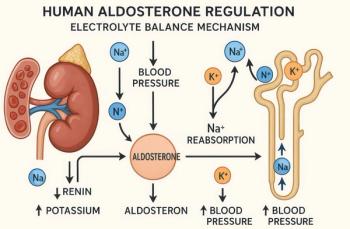
Anticoagulation Challenge II: The Older Patient
Consider this case of a 92-year-old man who presents with permanent atrial fibrillation and multiple comorbidities. Should he be anticoagulated?
There are a number of challenging special populations whose need for anticoagulation requires careful consideration during clinical decision-making. The following is our second case-based discussion on the best approach to anticoagulation in complex patients with AF.
Case 2. Geriatric Patients
A 92-year-old man with a history of hypertension, hyperlipidemia, diabetes, and chronic kidney disease presents with permanent AF. Of note, he also had a mechanical fall 2 years ago and sustained a hip fracture. His baseline creatinine is approximately 1.8 mg/dL. Because of his advanced age and the prior fall, he has not been initiated on or offered anticoagulation. Current weight is 74 kg.
Question 1. Which of the following would you recommend for this patient?
A. Oral anticoagulation
B. Aspirin alone
C. Neither – his current management is appropriate
D. Watchman mechanical left atrial appendage (LAA) occlusion device
Please click below for answer and next question.
Answer: Either option A or option D.
Given this patient's CHA2DS2-Vasc score of 4 (age, HTN, DM) and his chronic AF, it is not appropriate not to offer stroke prophylaxis at all (option C). It is true that he is at high risk for bleeding given his advanced age, prior fall, chronic thrombocytopenia, and CKD. For this reason, you need to have a comprehensive discussion with him and his caregivers, using shared decision making to determine the best management strategy. Aspirin alone (option B) is less desirable given its reduced efficacy compared with oral anticoagulation for stroke prevention in AF; this was shown to be true even in elderly patients (the Birmingham Atrial Fibrillation Treatment of the Aged Study [BAFTA])1 with a RR of stroke of 0.48 with warfarin vs aspirin and similar rates of intracranial hemorrhage.1Granted, BAFTA compared aspirin with warfarin and not the new direct oral anticoagulants (DOACs); however, oral anticoagulation performed better compared to aspirin alone, even in geriatric patients.
For this reason, I would discuss either an oral anticoagulant (option A) or a mechanical LAA occlusion device (option D) with this patient.
Question 2. You decide to prescribed an oral anticoagulant -- which of the following would you choose?
A. Full -dose apixaban (Eliquis)
B. Reduced-dose apixaban
C. Full-dose dabigatran (Pradaxa)
D. Full-dose rivaroxaban (Xarelto)
E. Warfarin, INR goal 1.5-2
F. Warfarin, INR goal 2-3
Please click below for answer and next question.
Answer. B. Reduced-dose apixaban
There is no data for the efficacy of a lower INR target (option E) in nonvalvular AF. When deciding between warfarin and a DOAC, I would choose a DOAC (and specifically apixaban) over warfarin because there is compelling data from analyses of large randomized controlled trials2 that apixaban wmas associated with a lower risk of both stroke and major bleeding vs warafarin. Dabigatran was associated with a similar risk of stroke but lower risk of major bleeding and rivaroxaban was associated with similar risks of both stroke and major bleeding compared to warfarin.
So, we are left with full-dose apixaban (option A) or reduced-dose apixaban (option B).
The apixaban dose should be reduced from 5 mg BID to 2.5 mg BID if two out of 3 of the following criteria are met: age > 80 y, weight < 60 kg, Cr > 1.5 mg/dL. In this patient, he meets the age and Cr level criteria and therefore should receive a lower dose.
Question 3. Which of the following is true of the combined PREVAIL3 and PROTECT4 data on the Watchman LAA occlusion device compared with warfarin?
A. Rates of reduction in stroke are superior with WATCHMAN with no difference in major bleeding.
B. Rates of all-cause stroke are equivalent with WATCHMAN, with reductions in hemorrhagic and disabling stroke as well as reductions in cardiovascular and all-cause mortality.
C. Rates of both stroke and major bleeding are higher with WATCHMAN vs warfarin
Please click next for answer and discussion.
Answer: Option B. Rates of all-cause stroke are equivalent with WATCHMAN, with reductions in hemorrhagic and disabling stroke as well as reductions in cardiovascular and all-cause mortality.
A meta-analysis5 of the PROTECT and PREVAIL randomized controlled trials with 5-year follow-up data demonstrated that LAA occlusion resulted in similar rates of stroke prevention compared to warfarin. But, because it decreased major bleeding and hemorrhagic stroke (as patients were not on warfarin for the long-term, only for the initial ~45 days) LAA occlusion actually resulted in less death and less significant disability. Of course, this was all contingent on the implanting centers overcoming the initial learning curve for placement of the device.
Please click here for Case I
References:
1. Mant J, Hobbs FD, Fletcher K, et al. Warfarin versus aspirin for stroke prevention in an elderly community population with atrial fibrillation (the Birmingham atrial fibrillation treatment of the aged study, BAFTA): a randomised controlled trial. Lancet. 2007;370:493-503.
2. Yao X, Abraham NS, Sangaralingham LR, et al. Effectiveness and safety of dabigatran, rivaroxaban, and apixaban versus warfarin in nonvalvular atrial fibrillation. Journal of the American Heart Association. 2016;5:e003725, originally published June 13, 2016.
3. Holmes DR, Reddy VY, Turi ZG, et al for the PROTECT AF Investigators. Percutaneous closure of the left atrial appendage versus warfarin therapy for prevention of stroke in patients with atrial fibrillation: a randomised non-inferiority trial. Lancet. 2009;374:534–542.
4. Holmes DR, Kar S, Price MJ, et al. Prospective randomized evaluation of the watchman left atrial appendage closure device in patients with atrial fibrillation versus long-term warfarin therapy: the PREVAIL trial. J Am Coll Cardiol. 2014;64:1–12.
5. Reddy VY, Doshi SK, Kar S, et al. 5-Year Outcomes after left atrial appendage closure. Journal of the American College of Cardiology. 2017;70:2964-2975.
Newsletter
Enhance your clinical practice with the Patient Care newsletter, offering the latest evidence-based guidelines, diagnostic insights, and treatment strategies for primary care physicians.













































































































































































































































































